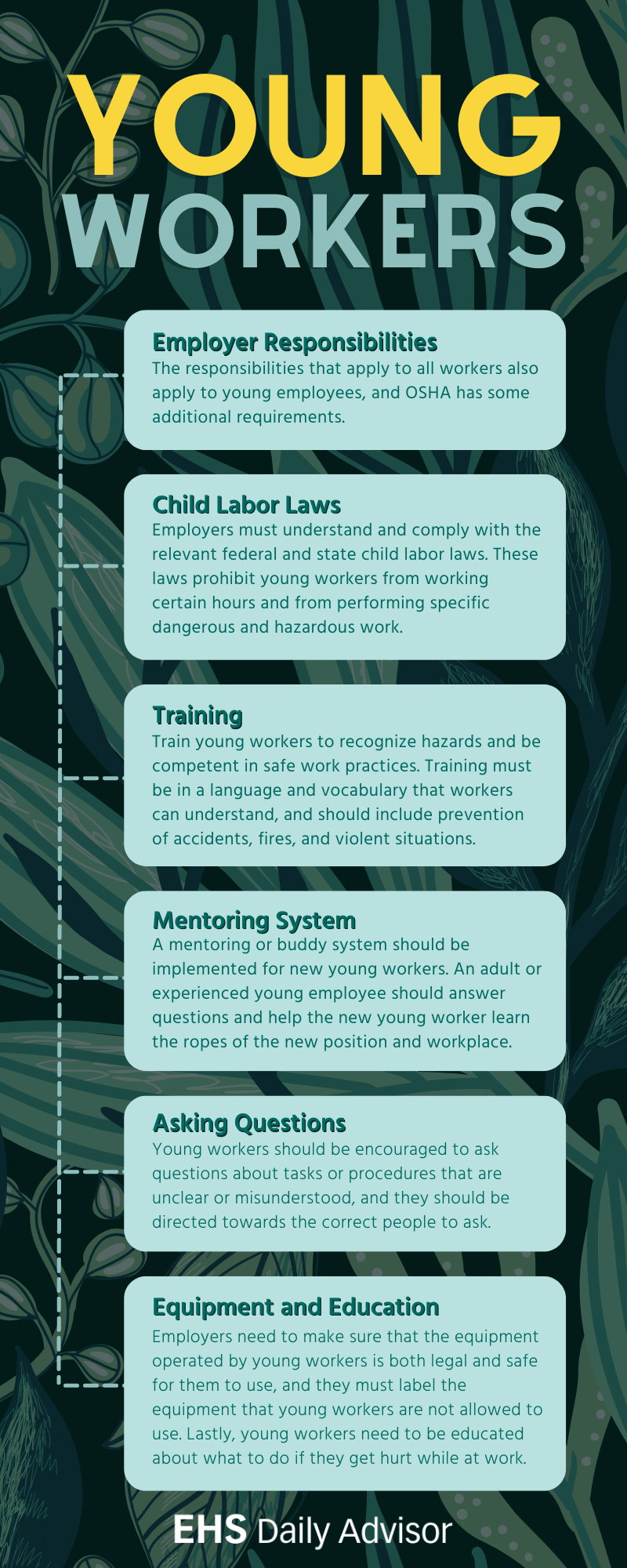Hiring young workers this summer? Let’s navigate responsibilities, compliance and safety protocols for a safe workplace environment.
- Employers have legal and ethical responsibilities toward young workers, including compliance with federal and state child labor laws.
- Adhering to child labor laws is crucial not only for legal compliance but also for the safety and well-being of young workers.
- Promote a safe workplace environment for young workers by providing safety education, a mentoring system and ensuring safe equipment usage.
Related: How to manage an aging workforce and grow your business
With summer approaching, some of your clients may be gearing up to fill new seasonal positions; young workers, with their fresh energy and dynamic potential, are a natural choice for such roles. However, it’s important for employers to remain well-informed and understand their special responsibilities to ensure the safety and well-being of these workers.
Young worker safeguards
While federal child labor laws, which limit the type of job, hours worked and equipment used, only apply to employees under the age of 18, employers still have legal and ethical responsibilities toward other young workers over 18. According to the Occupational Safety and Health Administration, “young workers are those new to the workplace, even up to the age of 24.” As such, it’s essential that employers understand and comply with their responsibilities according to both federal and state child labor laws. These laws exist to protect the rights, safety and well-being of young workers, and by complying, employers can also mitigate the legal risks and potential liabilities associated with violating these regulations.
Key employer responsibilities
Although an employer’s general safety obligations apply to workers of all ages, they are especially crucial for young workers who may be new to the workforce and unaware of their rights to a safe work environment. While by no means a comprehensive list, here are some key responsibilities employers have toward young workers:
- Safety education and training: Leaning on clear and accessible language, teach young workers to recognize hazards at work. They should, for example, understand how to prevent fires, accidents and violent situations, as well as what to do in the event of an injury.
- Mentoring system: Young workers are new not only to the job itself but also to professional work environments. Thus, employers are encouraged to implement a mentoring or buddy system that allows young workers to learn from an adult or more experienced young worker.
- Asking questions: Along the same lines, employers should foster the type of environment that invites and supports young workers to ask questions about confusing tasks and procedures. Encouraging this open communication helps ensure the safety and well-being of the entire workforce.
- Safe equipment: Ensure that all equipment that will be operated by young workers is safe and legal for them to use. Equipment that they cannot use should be properly labeled.
Related: How to ensure workers are properly trained in heavy machinery use
Ensuring a safe future for young workers
Promoting a safe workplace environment for young workers goes beyond legal requirements — it’s a fundamental responsibility. By prioritizing comprehensive training, implementing effective safety measures and fostering a culture of open communication, employers can create a work environment where young workers can thrive safely.
To help summarize your clients’ responsibilities toward young workers, review the infographic used with permission from EHS Daily Advisor below.

References:
Young Workers – Employer Responsibilities for Keeping Young Workers Safe | Occupational Safety and Health Administration (osha.gov)
Back to Basics: Young Workers – EHS Daily Advisor (blr.com)

![You are currently viewing An employer’s guide to young worker safety [infographic]](https://www.arrowheadgrp.com/wp-content/uploads/2024/06/AH-5.00-lifeguard-BLOG.png)